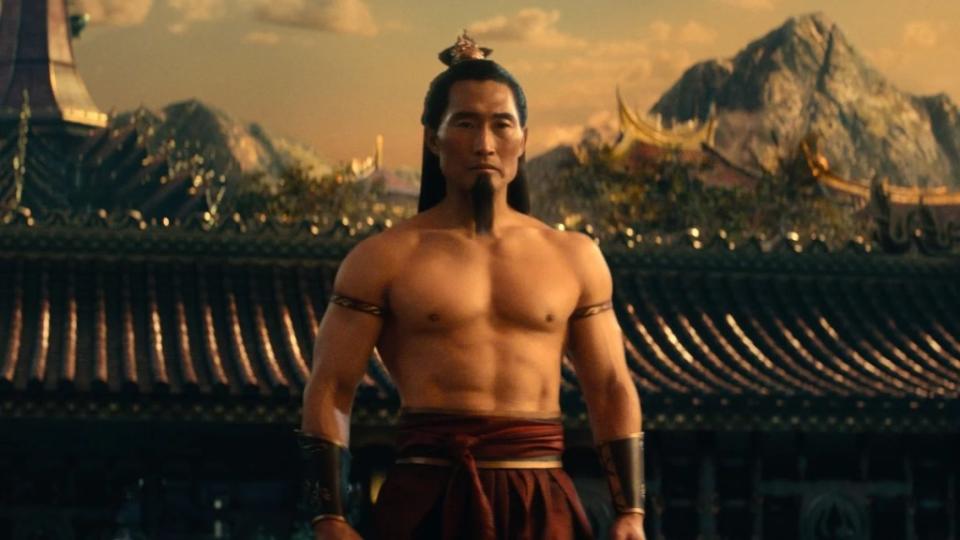‘Avatar: The Last Airbender’ Review: Netflix Triumphs With Ambitious Live-Action Remake
Few beloved franchises have inspired as much speculation as Netflix’s ambitious live-action new take on “Avatar: The Last Airbender.” The original animated series captivated audiences when it debuted in 2005 on Nickelodeon, and was praised for its epic worldbuilding and nuanced characterizations. It won everything from an Emmy to a Peabody award, and launched an entire franchise of comics, games, a spin-off series — and one rather unfortunate live-action movie.
In 2018, Netflix rekindled fans’ hopes when it announced an ambitious 8-episode live-action remake of Book One, the first arc of the original storyline, helmed by the original showrunners Michael Dante DiMartino and Bryan Konietzko. But in 2020, the duo exited the revival over creative differences. That same year, Netflix strategically debuted the 61-episode animated series during quarantine, creating a new generation of captive fans.
Behind-the-scenes shakeups aside, new showrunner Albert Kim and his team have stepped up and proven worthy custodians of the rich “Avatar” universe. While not a beat-for-beat adaptation, this beautifully crafted revival captures the original’s spirit while updating aspects that needed to be addressed better.
Netflix’s “Avatar” exists in a lush fantasy world where people naturally manifest the ability to “bend” or manipulate nature’s elements. Four nations inhabit this universe: the Water Tribe, Earth Kingdom, Air Nomads and the Fire Nation. Legend tells of ‘the Avatar,’ master of all four elements, maintaining harmony between them. But the previous Avatar mysteriously vanished 100 years ago. In the power vacuum, the ruthless Fire Nation eradicated the Air Nomads and conquered the other nations and tribes, unleashing totalitarian rule.
The story begins when Southern Water Tribe siblings Katara (Kiawentiio) and Sokka (Ian Ousley) discover a 12-year-old Airbender named Aang (Gordon Cormier), who mysteriously emerges from an icy sphere after lying dormant in an “avatar state” for almost 100 years. As the last of his people, Aang awakens confused, guilt-ridden and utterly unprepared for his destiny.
However, the Fire Nation’s Prince Zuko (Dallas Liu) — banished from his childhood home by his father, Fire Lord Ozai (Daniel Dae Kim), until he captures the Avatar — also becomes aware of Aang’s “awakening” and soon attacks the Southern Water Tribe. This forces Katara, Sokka and Aang to flee. The hero’s journey starts here; Aang must master the remaining elements to defeat the Fire Nation and restore balance to the world.

Visually, the show remains loyal to its source material, impressively recreating the stunning landscapes and dynamic action that initially captured fans’ hearts. The top-notch production design brings settings like Ozai’s eternally flaming throne room and the windswept vistas soaring over Aang’s sky-bison Aapa’s fur to life. Some characters, like the Kyoshi Warriors, appear lifted straight from the iconic frames of the cartoon.
The effects deliver, for the most part, especially during the climatic bending battles. But there are a few missteps. At one point, a disturbing CGI rendering of Aang’s face in the “Avatar State” looks jarringly out of place. The occasional compositing issues aside, the series delivers on adventure, and the CGI in the final battle is spectacular.
The cast proves plenty engaging, especially young actor Cormier, who embodies the buoyant Aang effortlessly. At the same time, Liu exudes the brooding, tormented Prince Zuko, as does Elizabeth Yu, whose portrayal of Zuko’s plotting sister Azula is sinister. But fan-favorite Paul Sun-Hyung Lee predictably steals his scenes as the ever-delightful Uncle Iroh. A character that could have used more screen time, however, was Kim’s Fire Lord Ozai, who spent most of the series in his throne room. Commander Zhao, played by Ken Lau, was given an expanded role in a departure from the source material.

Streamlining the plot felt necessary: avoiding overly episodic original subplots resulted in a tight, propulsive eight-episode arc. Showrunner Kim and his team did an admirable job curating the most resonant storylines. However, the pacing could be better, spending more time than necessary in some areas while speeding through others to reach the next plot point.
The series also seems unable to reconcile its younger viewers with more sophisticated older fans. Slapstick humor and frightening violence uneasily coexist, and though similar tonal awkwardness plagued the original, the visceral image of a man screaming as he is being burned alive on screen in live-action might not be appropriate for the youngest of viewers.
This adaptation should also be commended for bringing an authentic Asian voice to the franchise. Where the original animated series occasionally flirted with appropriation in borrowing cultural elements, Albert Kim and producers Jabbar Raisani, Dan Lin, Lindsey Liberatore and Michael Goi add a much-needed nuance — honoring the pan-Asian influences through an authentic lens. This live-action remake feels less like shallow exoticism and fully embraces the diverse East Asian, Inuit, Indigenous, and Southeast Asian heritages that enrich the show’s production and cast.
As a whole, Netflix’s ambitious “Avatar” stands as a captivating passing of the torch — honoring fans of the acclaimed original while initiating a new generation into its intricate world. Here’s hoping the climatic finale is but the first chapter in an ongoing live-action saga.
“Avatar: The Last Airbender” premieres Thursday, Feb. 22, on Netflix.
The post ‘Avatar: The Last Airbender’ Review: Netflix Triumphs With Ambitious Live-Action Remake appeared first on TheWrap.

 Yahoo News
Yahoo News 
